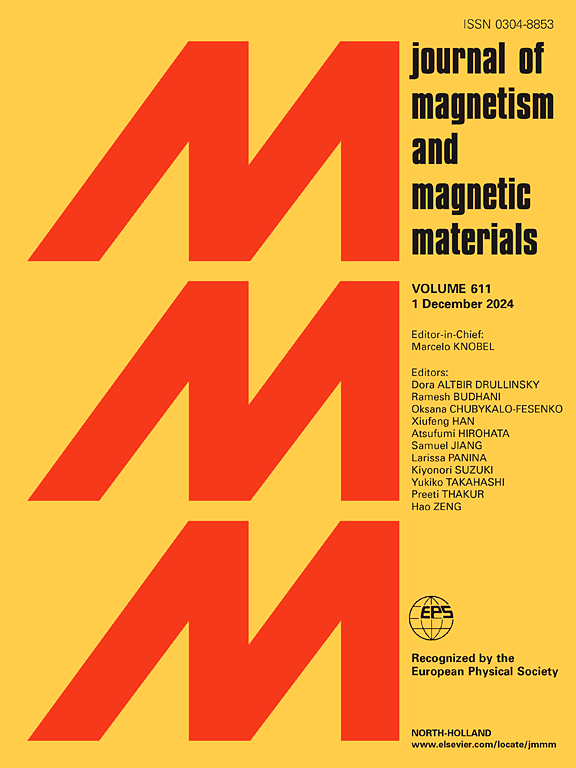Correlated electronic structures and magnetic properties of cerium monopnictides
IF 2.5
3区 材料科学
Q3 MATERIALS SCIENCE, MULTIDISCIPLINARY
引用次数: 0
Abstract
The electronic structures in cerium monopnictides CeX (X = N, P, As, Sb, Bi) have been systematically investigated using the DFT + DMFT method. We first investigate the geometric structures of the CeX. The results regarding the lattice parameter a, the bond length of Ce-X ions, the electronegativity of X ions, and the ion radius of X ions indicate that CeN is the most anomalous among them. This implies that the physical properties of CeN differ from those of other CeX (X = P, As, Sb, Bi) compounds. Based on this, we further investigate Ce-4f electrons’ behavior through the momentum-resolved spectral functions of CeX, the densities of states of Ce-4f5/2 and Ce-4f7/2 orbitals, and the Fermi surfaces. All these results present metal in CeX compounds. To study the correlation of the Ce-4f electrons, we also study the number of occupied electrons of Ce-4f (nf), the renormalization factor Z, and the Ce-4f5/2 peak height of CeX at the Fermi level. All these results suggest that CeN is in a mixed-valence state. Among these compounds, CeP exhibits a stronger correlation of Ce-4f electrons than others. In contrast, Ce-4f electrons in CeAs, CeSb, and CeBi are almost localized. These results imply that a 4f-electron itinerant-localized crossover can occur when changing the X atom from N to Bi. Finally, to understand the magnetic properties of CeX, we list six different magnetic structures: A1-AFM, G1-AFM, C1-AFM, A2-AFM, G2-AFM, and FM orders based on the DFT + U method. Our results show that CeP and CeAs have the A1-AFM order, while CeSb and CeBi have the A2-AFM order. These results are in good accordance with the experimental data.
铈单核苷酸的相关电子结构和磁性能
用DFT + DMFT方法系统地研究了铈单晶CeX (X = N, P, As, Sb, Bi)的电子结构。我们首先研究了CeX的几何结构。晶格参数a、Ce-X离子的键长、X离子的电负性和X离子的离子半径的结果表明,CeN是其中最反常的。这表明CeN的物理性质不同于其他CeX (X = P, As, Sb, Bi)化合物。在此基础上,我们通过CeX的动量分辨谱函数、Ce-4f5/2和Ce-4f7/2轨道的态密度和费米面进一步研究了Ce-4f电子的行为。这些结果都表明CeX化合物中存在金属。为了研究Ce-4f电子的相关性,我们还研究了Ce-4f的占据电子数(nf)、重整化因子Z和CeX在费米能级上的Ce-4f /2峰高。这些结果表明CeN处于混合价态。在这些化合物中,CeP表现出较强的Ce-4f电子相关性。相比之下,CeAs、CeSb和CeBi中的Ce-4f电子几乎是局域化的。这些结果表明,当X原子从N变为Bi时,会发生4f电子巡回局域交叉。最后,为了了解CeX的磁性,我们基于DFT + U方法列出了6种不同的磁性结构:A1-AFM、G1-AFM、C1-AFM、A2-AFM、G2-AFM和FM级。结果表明,CeP和CeAs具有A1-AFM顺序,而CeSb和CeBi具有A2-AFM顺序。这些结果与实验数据吻合较好。
本文章由计算机程序翻译,如有差异,请以英文原文为准。
求助全文
约1分钟内获得全文
求助全文
来源期刊

Journal of Magnetism and Magnetic Materials
物理-材料科学:综合
CiteScore
5.30
自引率
11.10%
发文量
1149
审稿时长
59 days
期刊介绍:
The Journal of Magnetism and Magnetic Materials provides an important forum for the disclosure and discussion of original contributions covering the whole spectrum of topics, from basic magnetism to the technology and applications of magnetic materials. The journal encourages greater interaction between the basic and applied sub-disciplines of magnetism with comprehensive review articles, in addition to full-length contributions. In addition, other categories of contributions are welcome, including Critical Focused issues, Current Perspectives and Outreach to the General Public.
Main Categories:
Full-length articles:
Technically original research documents that report results of value to the communities that comprise the journal audience. The link between chemical, structural and microstructural properties on the one hand and magnetic properties on the other hand are encouraged.
In addition to general topics covering all areas of magnetism and magnetic materials, the full-length articles also include three sub-sections, focusing on Nanomagnetism, Spintronics and Applications.
The sub-section on Nanomagnetism contains articles on magnetic nanoparticles, nanowires, thin films, 2D materials and other nanoscale magnetic materials and their applications.
The sub-section on Spintronics contains articles on magnetoresistance, magnetoimpedance, magneto-optical phenomena, Micro-Electro-Mechanical Systems (MEMS), and other topics related to spin current control and magneto-transport phenomena. The sub-section on Applications display papers that focus on applications of magnetic materials. The applications need to show a connection to magnetism.
Review articles:
Review articles organize, clarify, and summarize existing major works in the areas covered by the Journal and provide comprehensive citations to the full spectrum of relevant literature.
 求助内容:
求助内容: 应助结果提醒方式:
应助结果提醒方式:


